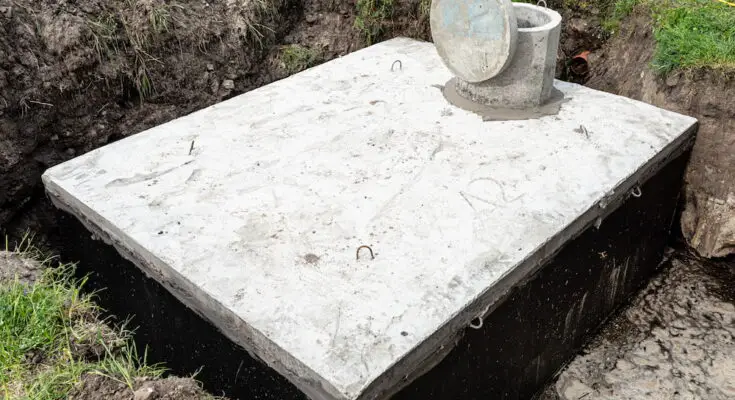Choosing the right septic system design is crucial for effective wastewater management and long-term reliability. Whether you’re building a new home or upgrading an existing system, selecting the correct septic tank design ensures your property complies with local regulations while functioning efficiently. Several factors, including soil conditions, household size, and installation costs, influence your decision. In this guide, we will walk through everything you need to know to make the right choice.
Why Septic System Design Matters
A well-designed septic system handles waste effectively without polluting the environment or creating future problems. Choosing the wrong septic tank design can result in frequent maintenance, expensive repairs, or even system failure. The right system ensures smooth operation, compliance with regulations, and minimal environmental impact. It also matches the property’s unique needs, saving time, money, and hassle in the long run.
Evaluating Your Property’s Conditions
Every property has unique characteristics that affect which septic system design will be most suitable. Soil quality, terrain, and groundwater levels all play an essential role in the decision-making process.
1. Soil Type and Absorption Rate
The type of soil on your property determines how well wastewater will filter and absorb into the ground. Sandy soil offers excellent drainage, making it compatible with conventional systems. In contrast, clay-rich soil drains poorly, requiring a more advanced septic tank design to prevent water buildup and system failure.
Performing a percolation (perc) test helps assess how quickly water moves through the soil. Properties with poor drainage may need specialized systems, such as mound systems or aerobic treatment units (ATUs), to ensure wastewater is properly treated.
2. Terrain and Slope
The layout of your land also affects which septic system will work best. For properties with level ground, gravity-fed systems are ideal, as they naturally move wastewater to the drain field. However, if your property is sloped, a septic tank design with pumps or pressure distribution may be required to ensure wastewater flows correctly.
Household Size and Water Usage
Your household size directly impacts the amount of wastewater the septic system must manage. A system that is too small will need frequent pumping and risk overflow, while an oversized system could result in unnecessary expenses.
- Smaller households: Typically require a 1,000-gallon tank.
- Larger households: Benefit from larger tanks (1,250 gallons or more) to accommodate higher water use.
When choosing a septic system design, consider all water sources, including showers, toilets, washing machines, and dishwashers. A properly sized system ensures smooth operation and reduces the likelihood of backups.
Types of Septic System Designs
Different septic system designs cater to varying property conditions, household needs, and budgets. Choosing the right one ensures efficient waste management while minimizing environmental impact and maintenance requirements.
1. Gravity-Fed Systems
Gravity-fed systems are among the most common and affordable options. They rely on natural gravity to move wastewater from the septic tank to the drain field. These systems work best on flat properties with well-draining soil. Their simple design makes them cost-effective and easy to maintain.
2. Aerobic Treatment Units (ATUs)
ATUs add oxygen to the wastewater treatment process, promoting the growth of bacteria that break down waste more effectively. These systems are ideal for properties with poor soil drainage or strict environmental regulations. While more expensive to install and maintain, they offer superior wastewater treatment compared to traditional systems.
3. Mound Systems
Mound systems raise the drain field above ground to prevent contamination when soil absorption is poor or the water table is high. These systems involve more labor and materials, making them more expensive than conventional systems. However, they provide a safe and effective solution for challenging site conditions.
4. Pressure Distribution Systems
In pressure distribution systems, pumps ensure wastewater is evenly dispersed across the drain field, preventing oversaturation. These systems are ideal for properties with uneven terrain or limited drain field space.
Environmental Regulations and Permits
Before installing your septic system, you must comply with local environmental regulations. These rules exist to protect groundwater and prevent pollution, ensuring your system operates safely. Advanced septic tank designs, such as ATUs or nitrogen-reducing systems, may be required in areas with strict environmental standards.
Obtaining permits is an essential step. Your installer will need to pass inspections during and after installation to ensure the system meets local guidelines. A professional contractor can help you navigate the permit process and recommend the best septic system design for your property.
Installation Costs and Budgeting
Installing a septic system is a significant investment, so it’s essential to consider both the initial cost and long-term expenses. Gravity-fed systems are typically the most affordable, while ATUs and mound systems come with higher installation costs due to additional components and labor.
It’s also crucial to budget for routine maintenance. Regular pumping, inspections, and minor repairs keep your septic system running efficiently and extend its lifespan. Investing in a high-quality septic tank design may have higher upfront costs but can save money on repairs and replacements in the future.
Maintenance Requirements
Different septic system designs require varying levels of maintenance. Conventional gravity systems are low-maintenance, needing only periodic pumping and inspections. However, more advanced systems, like ATUs, require more frequent maintenance to ensure all components are functioning correctly.
Routine maintenance typically includes:
- Pumping: Every three to five years, depending on usage.
- Inspections: Annually or bi-annually to check for leaks and blockages.
- Component servicing: For advanced systems with pumps or alarms.
By keeping up with maintenance, homeowners can avoid costly repairs and extend the life of their septic system.
Planning for Future Growth
If you anticipate future changes, such as adding more rooms or family members, it’s wise to select a septic system design that can accommodate future growth. Installing a larger tank and planning for an expandable drain field now can save you from costly upgrades later. A scalable system ensures your septic tank design will continue to meet your needs as your household evolves.
Working with a Professional Installer
Choosing and installing the right septic system design requires expertise. Working with a licensed contractor ensures that your system is tailored to your property’s specific needs and complies with all local regulations. An experienced installer will conduct soil tests, recommend the most suitable design, and handle the permitting process. They will also ensure that your septic tank design is properly installed, minimizing the risk of future problems.
Conclusion
Selecting the right septic system design is essential for effective wastewater management and long-term reliability. Factors such as soil conditions, household size, terrain, and local regulations must be carefully considered to make the right choice. With the correct septic tank design, you can ensure smooth operation, compliance with environmental standards, and minimal maintenance needs.
Partnering with a professional installer ensures proper installation and peace of mind, knowing your septic system is designed to handle your household’s needs. Whether you opt for a simple gravity-fed system or an advanced aerobic treatment unit, the right choice will save you time, money, and stress in the long run. Thoughtful planning today will protect your investment and keep your septic system functioning efficiently for years to come.



